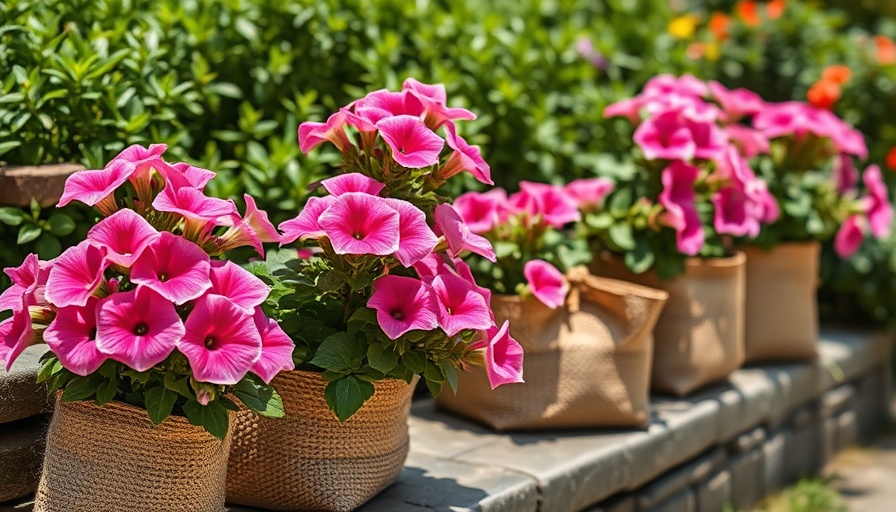
Transforming Thrift into Treasure: The Beauty of Straw Purse Planters
As the summer sun warms our days, what better way to celebrate the season than with a splash of color using thrifted straw bags? These rustic purses, often overlooked, can transform your garden into a vibrant floral display. Not only do they provide a charming aesthetic, but they also breathe new life into secondhand items, showcasing your commitment to sustainable living.
Why Choose Annuals for Your Straw Purse Planter
Straw purse planters, filled with colorful annuals, create an eye-catching display perfect for porches or patios. Unlike perennials, which bloom year after year but take their time, annuals such as Sunpatiens burst to life with vibrant flowers all summer long. This quick reward encourages a joyful attitude towards gardening, inviting bursts of color into our immediate environment.
Easy Steps to Make Your Own Straw Purse Planter
Creating a straw purse planter is an enjoyable DIY project that requires minimal materials:
- Thrifted straw purse
- Outdoor silicone sealer
- Plastic sheet or bag for lining
- Spray adhesive
- Electric drill or hammer and nails
- Landscape fabric
- Container soil
- Chosen annuals
To start, find a sturdy straw purse from your local thrift store. For under ten dollars, you can find a collection that complements your outdoor aesthetic! Prepare the bag by adding a drainage hole with outdoor silicone, followed by lining the inside with plastic. Fill it with quality soil and plant your chosen annuals.
Personal Touches: Enhancing Your Planters
Each purse planter can reflect your unique style. Consider spray painting the purse or adding embellishments like ribbons or beads for a personal touch. This decorative project not only brightens your space but also encourages creativity, which can inspire others in your community to engage in similar environmentally friendly initiatives.
The Joy of Fleeting Beauty
One of the charming aspects of using annuals in your planters is their transience. Unlike perennials, which offer longevity but require patience, annuals are a celebration of potential and impermanence. The bright blooms invite admiration for their fleeting beauty, encouraging gardeners to appreciate the present moment—even if it’s just for one season.
Practical Gardening Tips for Your Straw Purse Planter
To ensure your purse planter thrives, regular maintenance is key. Here are useful gardening tips:
- Watering: Keep the soil moist but not drenched. Due to their unique structure, straw plants may require frequent watering.
- Fertilization: Use organic fertilizers to encourage lush growth and blooming.
- Pest Control: Monitor the plants for pests and treat infestations promptly with organic pesticides.
By regularly tending to your straw purse planters, you foster an environment that not only enhances your outdoor space but also supports local pollinators.
Building Community Through Gardening
Creating straw purse planters isn’t just about beautifying your home; it serves to inspire community engagement. Invite friends or family over for a planting party—share materials, tools, and experiences as you build colorful displays together. Such gatherings not only cultivate camaraderie but also instill a sense of belonging through shared creativity.
Conclusion: Embrace This Summer Trend
As summer unfolds, consider enhancing your garden space with sustainable DIY projects like straw purse planters. Not only do they beautify your outdoor living area, but they also support environmentally-friendly practices by repurposing items that would otherwise be discarded. Each planter is not just a home for your favorite annuals; it’s a celebration of summer and a testament to your keen eye for creativity.
Let’s join in this vibrant gardening adventure, celebrating the beauty of life’s fleeting moments. Happy Planting!
 Add Row
Add Row  Add
Add 




Write A Comment